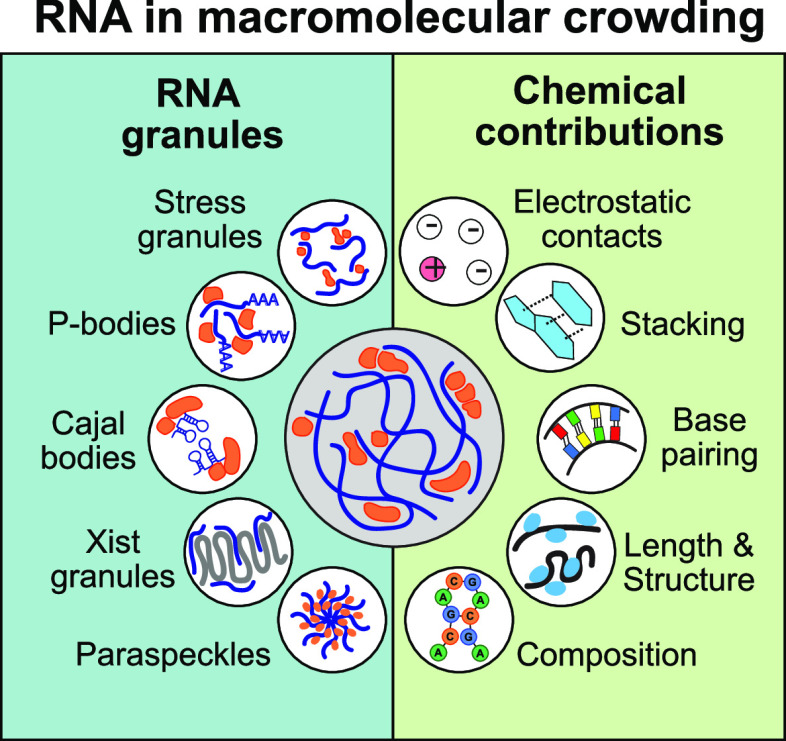- Record: found
- Abstract: found
- Article: found
RNA: The Unsuspected Conductor in the Orchestra of Macromolecular Crowding

Read this article at
Abstract

This comprehensive Review delves into the chemical principles governing RNA-mediated crowding events, commonly referred to as granules or biological condensates. We explore the pivotal role played by RNA sequence, structure, and chemical modifications in these processes, uncovering their correlation with crowding phenomena under physiological conditions. Additionally, we investigate instances where crowding deviates from its intended function, leading to pathological consequences. By deepening our understanding of the delicate balance that governs molecular crowding driven by RNA and its implications for cellular homeostasis, we aim to shed light on this intriguing area of research. Our exploration extends to the methodologies employed to decipher the composition and structural intricacies of RNA granules, offering a comprehensive overview of the techniques used to characterize them, including relevant computational approaches. Through two detailed examples highlighting the significance of noncoding RNAs, NEAT1 and XIST, in the formation of phase-separated assemblies and their influence on the cellular landscape, we emphasize their crucial role in cellular organization and function. By elucidating the chemical underpinnings of RNA-mediated molecular crowding, investigating the role of modifications, structures, and composition of RNA granules, and exploring both physiological and aberrant phase separation phenomena, this Review provides a multifaceted understanding of the intriguing world of RNA-mediated biological condensates.
Related collections
Most cited references432
- Record: found
- Abstract: not found
- Article: not found
Atomic Force Microscope
- Record: found
- Abstract: found
- Article: not found
Biomolecular condensates: organizers of cellular biochemistry
- Record: found
- Abstract: found
- Article: not found